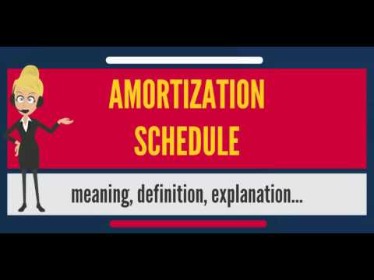
Her work has appeared in Business Insider, Forbes, and The New York Times, and on LendingTree, Credit Karma, and Discover, among others. Schedule an appointment with one of our team members so we can get you on the fast track to exceptional accounting. Apart from https://www.simple-accounting.org/ that, you can use its full-blown potential with the double-entry method. In short, the double-entry method requires making 2 entries to a general ledger to record each transaction. In other words, they know they can get paid as soon as they achieve a milestone.
Project-Specific Accounts

Creating contractor chart accounts means you have a proper accounts list to account for income and expenses with extreme accuracy. Many of the household accounting software names, such as QuickBooks, Xero and Zoho Books, can be classified as integrated accounting software solutions. A Chart of Accounts (CoA) for household finance management is a structured list of all financial accounts used in the household’s accounting system.
Leverage Professional Construction Accounting Software
Sometimes, they use one method for their bookkeeping and another for tax reporting. All this is legal — and even advisable — but the only thing is to remain consistent over time. When selecting accounting software, look for options that allow you to import your chart of accounts directly or easily map your existing accounts to the software’s standard chart of accounts. This will save you time and effort in setting up your financial system and ensure accurate data transfer between your software and chart of accounts. When you sign up for QuickBooks, the chart of accounts is automatically created based on the information you provide during the account set up process.
Assign account numbers to business accounts
Each of these will be reflected in your financial statements, including the balance sheet and the income statement. As expenses and costs come in from jobs, they get allocated to the correct area of COA. This list of accounts provides the structure for your company’s financial statements and is designed to provide the information needed for financial reports. All financial transactions need to be documented, and you need a reliable structure in place to organize your records.
In other words, a chart of accounts is simply a list of all accounts within your business. It mainly works by separating and organizing income from expenses; putting all financial information into distinct categories (i.e. accounts). The people that set up the QuickBooks just have a generic account that gets thrown in there.
Designing a Chart of Accounts for Construction Companies
Since everything looks better in a table, here’s one to help you remember the 3 critical revenue recognition methods. Another way of thinking about this method is — everything gets onto the income statement at one single point. In contrast, construction companies face a different and much more complicated series of challenges. Construction accounting deals with long-term, flexible contracts with a ton of irregularities — in comparison to other sectors, like retail. As previously mentioned, it’s best to have your accountant work with you to ensure your books are accurate and that your in good standing with CRA guidelines when it comes to your taxes.
- This COA is designed specifically for your industry, tailored to account for all the services you have to offer.
- The prevailing wage simply means the standard hourly rate for a worker in a particular locality or state — as determined by the Department of Labor of that state or by local regulatory agencies.
- Luckily, modern accounting software makes life easier for accountants by automatically labeling and categorizing the entries, which makes them easier to track and locate.
- Within the general ledger accounts, you should include sub-accounts that are specific to the construction industry.
- The Chart of Accounts for a manufacturing company is designed to capture the complexity of manufacturing operations, from inventory management to the calculation of COGS and tracking of production costs.
This Chart of Accounts provides a foundational framework for construction companies to manage and report their financial activities accurately. It ensures that all financial transactions are categorized systematically, supporting effective project cost tracking, financial analysis, and strategic decision-making. Regular review and customization of the CoA are essential to accommodate the dynamic nature of the construction industry and the specific needs of the company. A Chart of Accounts (CoA) for a manufacturing company provides a structured framework for recording and reporting financial transactions, tailored to the unique needs of manufacturing operations.
By providing a clear and organized structure for recording financial transactions, the chart of accounts enables you to track and analyze your company’s financial performance accurately. Furthermore, integration with accounting software enables real-time financial reporting, giving you up-to-date insights into your construction company’s financial performance. You can generate financial statements, track project costs, monitor cash flow, and make data-driven decisions more efficiently. The chart of accounts can be defined as a structured list of all the accounts that a construction company uses to record its financial transactions.
But some of these things , perhaps you’re trying to allocate things like your retirement plan allocation that has to do with your job labor versus your administrative labor. Then we have the current liabilities, and that starts with the 2000s in my chart of accounts, and it accounting study guide by accountinginfo com goes to say 22, 23, 2400. Where we’re trying to figure out the things that are due within the next 12 months, which would be the accounts payable, things like your payroll tax liabilities. The principal payments on your long term debt that are due within the next 12 months.
That’s one of the things that we see, we’re trying to put a financial statement together and they’ve never really had books. And a lot of times they’ll look like they’re https://www.intuit-payroll.org/what-the-form-w2-box-12-codes-mean-2020/ way under billed because they don’t have this in place. Equity represents the residual value of your company’s assets after all liabilities have been paid off.
As time goes by, you may find yourself wanting to create a new line item for each transaction. However, doing so could litter your company’s chart and make it confusing to navigate. Many construction companies use a “completion percentage” approach, meaning they calculate estimated taxes based on quarterly income and expense reports. A standard COA will be a numbered list of the accounts that fill out a company’s general ledger, acting as a filing system that categorizes a company’s accounts.
Overbilling occurs when a contractor bills for contracted labor and materials prior to that work actually being completed. Underbilling occurs when a contractor does not bill for all the labor and materials delivered in a billing cycle. The ledger is broken up into separate accounts that help categorize transactions. You can think of these accounts as pockets or folders that collect amounts, and then report the totals at the end of a period.
It’s often necessary to move amounts or transactions from one general ledger account to another. This may be done because of errors or in order to record internal transactions that don’t affect accounts payable, accounts receivable, or payroll. These correcting transactions are called journal entries and require the same double-entry method as any other transaction. Transactions from accounts payable, accounts receivable, and payroll affect the general ledger as they are entered into the accounting system. As mentioned above, each transaction affects at least two accounts and is balanced in its debits and credits. This activity feeds the general ledger accounts as each transaction is processed.

The COA tracks your business income and expenses, which you’ll need to report on your income tax return every year. A chart of accounts gives you great insight into your business’s revenue beyond just telling you how much money you earn. It shows peaks and valleys in your income, how much cash flow is at your disposal, and how long it should last you given your average monthly business expenses. Charts of accounts are an index, or list, of the various financial accounts that can be found in your company’s general ledger. These accounts are separated into different categories, including revenue, liabilities, assets, and expenditures. These 3 methods sound pretty self-explanatory, and contractors use them to determine when expenses and income “count” — so to speak.







